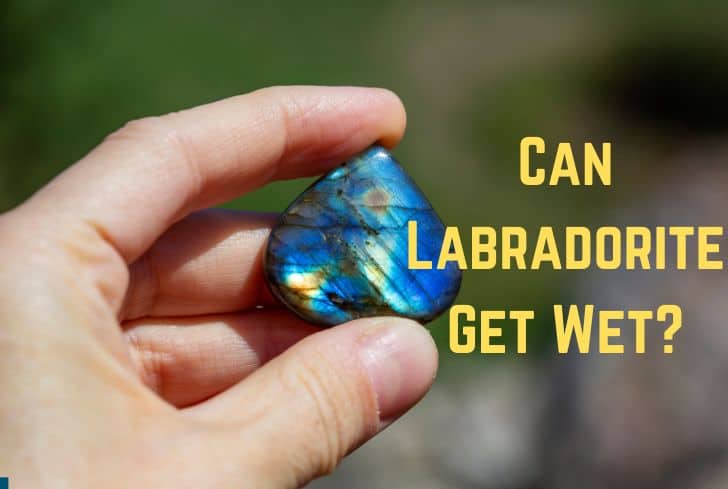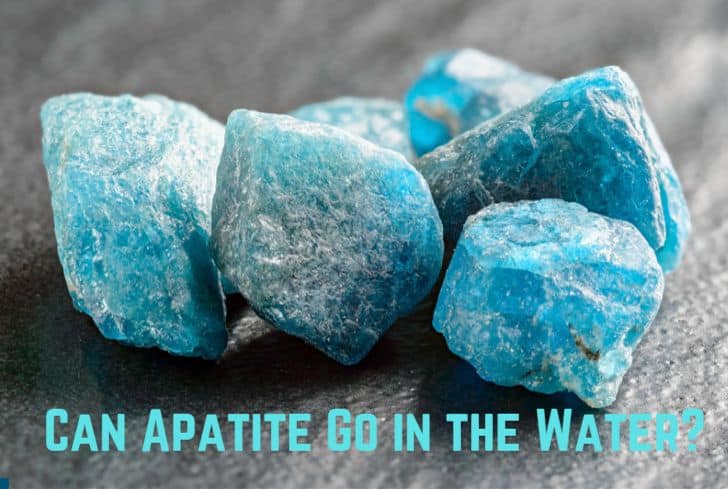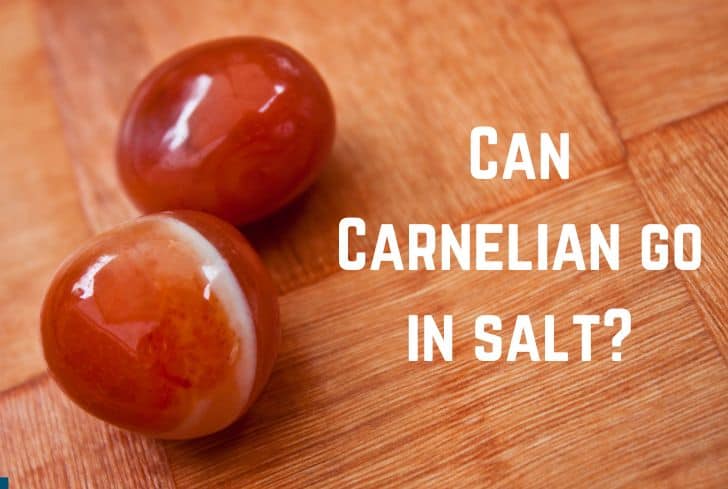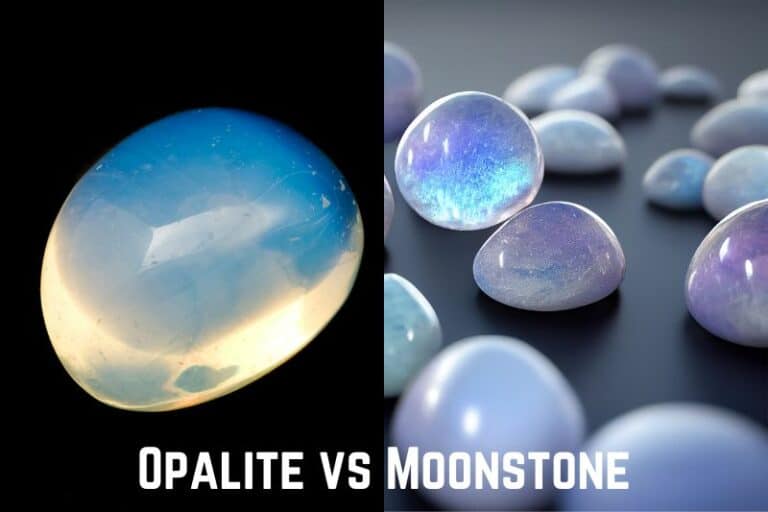Can Shungite Go in the Water? (Is It Magnetic?)
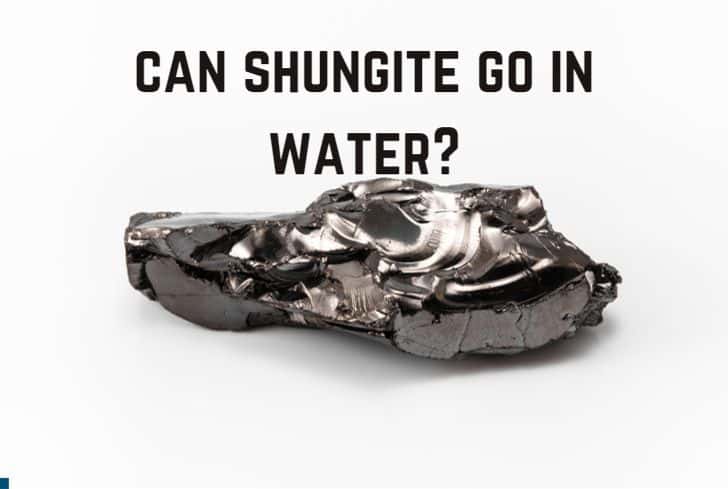
Shungite is a black, lustrous mineraloid that is made of up to 99% carbon. It was first discovered from a deposit near Shunga Village, in Karelia, Russia, and that’s where the stone gets its name from. Since ancient times, Shungite has been believed to be a purifying stone, and some of these claims have now been scientifically confirmed.
Have you ever wondered if shungite can go in the water? In this article, we are going to discuss just that. We will begin by looking at the properties of the stone. Then we will discuss its interaction with water, saltwater and sunlight.
Read: Can Red Jasper Go in the Water?
Can Shungite Get Wet?
Yes, Shungite can go in the water. It has a value of 3.5-4 on the Mohs Hardness Scale, which is quite low, but it can still survive in the water. Shungite has anti-bacterial properties that help in cleansing water too, but it should not be immersed for too long as water can be damaging.
Since ancient times, shungite has been believed to purify water. This claim has now been verified by science: shungite has both anti-bacterial and anti-microbial properties that help it clean water.
However, like all stones, shungite should not be immersed in water for long. Water enters the crevices of stones and expands their cracks. These fissures may not be visible at first but can slowly damage the structure of the stone, making the already-brittle shungite even more prone to damage.
Water also tarnishes the appearance of the stone. It strips off the polish from the surface, making it look duller. Water encourages fissures, which can affect the way light bounces inside the stone, thereby damaging the beautiful optical properties of the stone.
So, shungite is safe to go in water for a short period, and later we will discuss how to clean the stone with water. Just remember not to immerse the stone for long.
Properties of Shungite
These are the properties of shungite:
- Appearance: Shungite is a carbon-rich mineral that is black in colour. In terms of diaphaneity, it is opaque. It is divided into four classes based on its lustre (the way light interacts with the stone): bright, semi-bright, semi-dull, and dull. Shungite has a metastable structure, which is possibly incapable of graphitization.
- Composition: Shungite is a pyrobitumen-like mineraloid that is rich in carbon. Essentially, it is noncrystalline carbon with trace amounts of fullerene (0.0001 < 0.001%). Fullerenes are 3D spherical molecules made up of 60 carbon atoms; these molecules are hollow and often called buckyballs. Besides fullerenes, shungite contains nearly all of the minerals on the periodic table.
- Hardness: Shungite has a value of 3.5 to 4 on the Mohs Hardness Scale. This means that it is quite a soft mineral that can easily scratch and break. Its softness is one of the identifying properties of the stone. Because of its low hardness, shungite is mostly used for jewellery pieces that are less prone to impacts, such as pendants and earrings.
- Formation: Shungite was once regarded as an example of abiogenic petroleum formation, but its biological origin has now become widely accepted. Shungite formed billions of years ago when dead organisms mixed with mud and silt at the bottom of a salty water body. Geothermal heat and compression turned this accumulated organic matter into liquid hydrocarbons (like oil), which slowly solidified into rocks.
- Anti-Bacterial and Anti-Microbial: The anti-bacterial properties of shungite have now been scientifically confirmed. Sand and stones act as natural filters on earth, and carbon-based filters have also been used to purify water. As a carbon-rich mineraloid, shungite also removes impurities from water. Shungite is also anti-microbial, and it kills bacteria and germs in the water. This is why shungite can be used in water treatment.
Besides these, since ancient times, shungite has been believed to possess several other healing properties. It has been used as a folk medical treatment since the 18th century when Peter the Great established Russia’s first spa in Karelia. The purpose of the spa was to help others experience the water-purifying properties of shungite.
In 2017, research suggested that the fullerene-based compound within shungite has antioxidant and anti-inflammatory properties, and it can help against UVB-induced skin damage.
Shungite can also be used for meditation, which can lower your blood pressure and bring calmness to your mind. One form of meditation is concentration meditation, in which you focus on just one object, and this object can be a shungite stone.
Check out this video by Crystal Meanings to find out more about the spiritual properties of shungite.
Can Shungite go in Sunlight?
Yes, shungite can go in the sunlight. Keeping stones out in the sun is a common way of recharging them, and it is safe for shungite. However, since shungite is a soft mineral, it should not be left out for too long.
Shungite has a value of 3.5-4 on the Mohs Hardness Scale, so it is quite a soft mineral that can be easily scratched or broken. Keeping it out in the sun is safe, but you should not overdo it, as softer stones generaly get damaged by sunlight.
Try keeping your stone on a windowsill, so that the glass as a protective layer. You can also try other recharging methods like moonlight, sage, etc.
Is Shungite Magnetic?
No, shungite is not magnetic. Many people have claimed that shungite protects against EMF (electric and magnetic forces caused by electromagnetic raditation) of devices like cell phones, Wi-Fi, television, etc. However, these are pseudoscientific claims that do not have much validity.
A quick online search would show you many products and jewellery pieces made up of shungite claiming to protect you from harmful EMF. They claim that shungite removes EMF (including 5G radiation) from your surroundings better than any other material.
However, science does not really support these claims. This is just misinformation spread by 5G conspiracy theorists and other pseudoscientists.
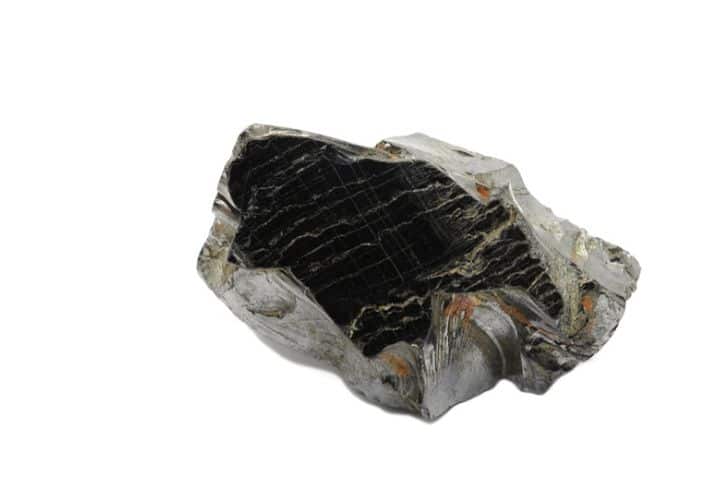
Can Shungite Rust?
Yes, shungite can get rust. But this should not be a matter of great concern, as it will permanently damage your stone. Rusting is a natural and normal process for a stone like shungite. It exists only on the surface of shungite and can be easily removed, keeping the properties of your stone intact.
Rust is basically iron oxide that is formed when the iron is in contact with oxygen in water or humid air. Shungite comes from Karelia, which is quite a humid area. Plus Karelia soil is filled with iron ore. Iron and humidity, both prerequisites are present there, so it is natural to have rust.
Rust can form on shungite itself or be moved on the stone from other minerals. In either case, it is nothing to be worried about, as the rust is only on the surface (unless the stone has deep cracks).
You can easily get rid of the rust by peeling it off with a pointy needle. Make sure that you do this carefully as shungite is a soft mineral that can be easily scratched. After peeling, you can rinse your stone under running water, and it will be back to its original, beautiful self.
Is Shungite Rare?
Yes, shungite is a rare mineraloid that is made up of 99% carbon. It is prominently found near Shunga village in Karelia, Russia. The stone has a unique composition, containing fullerenes along with almost all of the minerals on the periodic table.
Shungite’s rarity is related to its mysterious origins. Although many believe that it came from dead organic matter, others argue that the stone is at least 2 billion years old—much before life existed on the planet. Other theories about shungite’s origins include:
- It came from a meteorite that struck Earth and deposited shungite.
- Organic matter of sedimentary rocks underwent a transformation and became shungite.
- Shungite came from microorganisms in a water body.
Despite the mystery of its origins, scientists agree that the fullerene content of shungite is what makes it special. The Shunga deposit in Russia is the main source of shungite and it contains more than 250 gigatonnes of the mineraloid.
Read: Can Apatite Go in the Water?
How to Cleanse Shungite?
Follow these steps to clean shungite:
- Mix a soft detergent/soap with water.
- Immerse shungite in the solution and clean it with a soft brush.
- Rinse the stone under running water to get rid of all the excess soap.
- Let the stone air dry for a while. Make sure you twist it a few times to remove water from the crevices.
Shungite is a soft stone, so besides cleaning, make sure you handle it with care in everyday use too. Keep it separate from other stones, as harder ones can scratch it easily. Do not wear it while engaged in physical activities like exercising, swimming, etc.
Conclusion
In this article, we have discussed shungite’s interaction with water. With a value of 3.5-4 on the Mohs Hardness Scale, shungite is quite a soft mineral but it can survive underwater for a short period. However, like all minerals, shungite shouldn’t be immersed for long. We looked at the properties, especially the purifying nature of shungite. We finally learnt about cleaning the stone.

